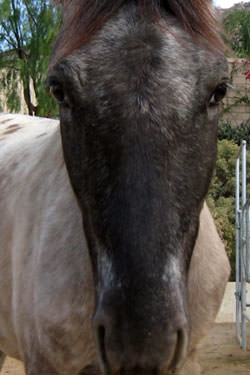 Courtesy USDA/ Robert Griesbach Keep your peppers healthy by keeping lookout for spots or lesions on the pepper plant’s fruit or foliage and by checking for abnormal growth. |
From hot chili peppers to sweet bell peppers, these summer fruits bring flavor, color and variety to many of the foods we love. To get the most out of your pepper plants this summer, follow these suggestions for common pepper problems from experts at the University of Illinois and Texas A & M University agricultural extension agencies.
Pepper Fruit Fail
The right growing temperatures are vital to produce fruit in a pepper plant. For bell-type peppers, daytime growing temperatures should fall between 70 and 80 degrees F; for hot peppers, optimum growing temperatures are between 70 and 85 degrees F.
Most peppers will drop their blooms when day temperatures are above 90 degrees F and night temperatures are above 75 degrees F, with the exception of hot peppers, which can withstand hot weather better. Pepper plants can’t tolerate frost, and when night temperatures are below 50 to 55 degrees F, the plant leaves may turn yellow and flowers may drop.
Tip: Start your pepper plants from seeds indoors in late winter and transplant them into the garden after the soil and air have warmed in the spring. After transplanting, use raised beds, black plastic mulch and floating row covers to warm and drain the soil when cool weather persists in the spring.
Pepper Foliage Foils
Spots or lesions on the foliage of pepper plants may be the result of a combination of three foliage diseases: Alternaria leaf spot, Cercospora leaf spot and bacteria leaf spot.
Tip: Use an organic fungicide at the first sign of the disease and continue at one- to two-week intervals during the height of the disease.
Abnormal Pepper Growth
Distorted or yellowed foliage and fruit on pepper plants are probably the result of viruses transmitted by aphids. Aphids are tiny insects clustered on the undersides of leaves and on new growth. As they suck pepper plant juices, the leaves become yellowed and distorted, and they often cause viruses to spread. When a pepper plant becomes infected with one of the aphid viruses, remove the plant.
Tip: Be sure the pepper plants you buy are healthy, and use a good insect-control program.
Wilted Pepper Plants
If the inner stems of your pepper plants are dark and plants wilt and die soon after a rainfall, the plants may be infected with Phytophthora stem rot, a soil-borne fungus that’s particularly severe when water stands around the plant.
If the pepper plants have a white growth at the base with small, bead-like structures the size of a pinhead, the plant could have southern blight, also caused by a soil-borne fungus. Remove the leaves around the base of the plant to prevent the spread of the fungus.
Tip: Plant in a raised bed for best drainage. If your plants are in the ground, use crop rotation and bury your organic material deep to control the fungus.
Wiggly Trails
Small, wiggly trails on the leaves of pepper plants are caused by leaf miners, and large amounts of them can defoliate plants and reduce yields.
Tip: Treat plants with a biological or biorational insecticide (such as SunSpray Horticultural Oil) two or three times a day at five- to seven-day intervals.
Sun Spots
Tan or translucent spots on developing pepper fruit is most likely sunscald, a condition that occurs when the fruit is exposed to direct sun during the hottest part of the day.
Tip: As soon as you see sunscald, remove the fruit to stimulate more foliage growth and more fruit protection.
More Pepper Tips
Watch your pepper plants carefully, because early detection, particularly from pest problems, can prevent damage. Damaged leaves or stems on the plants should be removed and destroyed. Do not compost damaged foliage. Be sure to keep the garden area clean of debris, as pruning or weeding remnants can attract insects.
For more information about pepper problems or particular insects in your area, contact your local extension agency.













